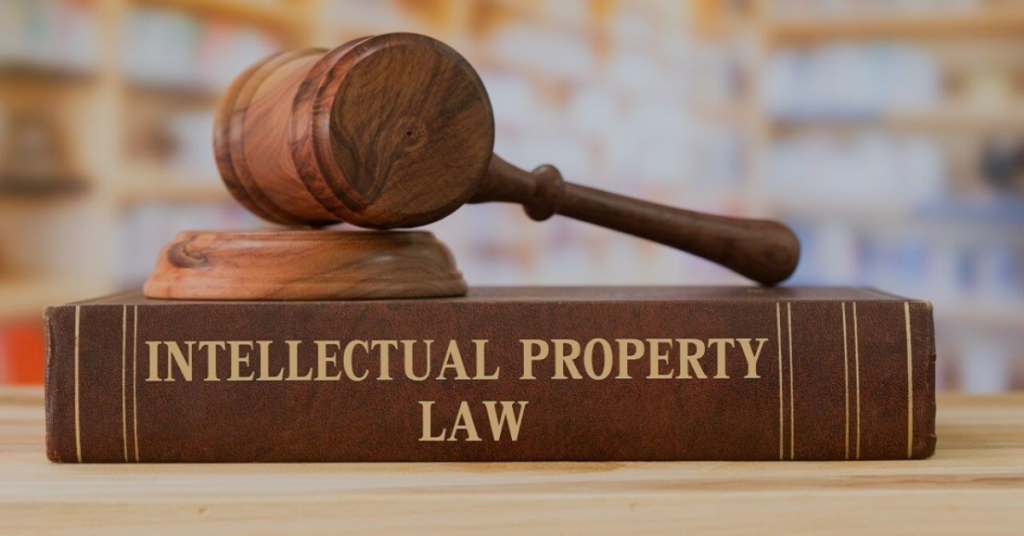Suits for Immovable Property Situate Within Jurisdiction of Different Courts: A Comprehensive Analysis under the Civil Procedure Code, 1908
Jurisdiction, the power of a court to hear and determine a cause, is a cornerstone of civil procedure. The Civil Procedure Code, 1908 (CPC) meticulously outlines the rules governing jurisdiction to ensure fairness and prevent conflicting decisions. When dealing with suits concerning immovable property, particularly when such property is situated within the jurisdiction of multiple courts, specific provisions under the CPC come into play. This article delves into these provisions, providing a detailed analysis under Indian law.
Section 16: Where Suits to be Instituted
Section 16 of the CPC forms the bedrock for determining the place of suing in suits relating to immovable property. It dictates that suits for the recovery of immovable property, with or without rent or profits; for the partition of immovable property; for foreclosure, sale or redemption in the case of a mortgage of or charge upon immovable property; for the determination of any other right to or interest in immovable property; for compensation for wrong to immovable property; shall be instituted in the court within the local limits of whose jurisdiction the property is situate.
This section establishes the principle of situs – the place where the property is located – as the primary factor in determining jurisdiction. The rationale behind this principle is that the court closest to the property is best positioned to assess the evidence, inspect the site (if necessary), and enforce its orders.
Key aspects of Section 16:
- Recovery of Immovable Property: This covers suits seeking possession of land or buildings.
- Partition: Suits for dividing joint property among co-owners.
- Foreclosure, Sale, or Redemption: Actions related to mortgages, where the mortgagee seeks to foreclose on the property or sell it to recover debts, or where the mortgagor seeks to redeem the property by paying off the mortgage.
- Determination of Rights: This encompasses a broad range of suits seeking to establish or clarify rights related to the property, such as easement rights, tenancy rights, or ownership disputes.
- Compensation for Wrong: Suits for damages caused to immovable property, such as trespass or damage to structures.
Section 17: Suits for Immovable Property Situate Within Jurisdiction of Different Courts
Section 17 addresses the specific scenario where immovable property is located within the jurisdiction of two or more courts. It states:
“Where a suit is to obtain relief respecting, or compensation for wrong to, immovable property situate within the jurisdiction of different Courts, the suit may be instituted in any Court within the local limits of whose jurisdiction any portion of the property is situate:
Provided that, in respect of the value of the subject-matter of the suit, the entire claim is cognizable by such Court.”
This section creates an exception to the strict situs rule established in Section 16. It allows the plaintiff to choose any court within whose jurisdiction a portion of the property lies, provided that the chosen court has pecuniary jurisdiction to entertain the entire claim.
Explanation of the provision:
- Relief or Compensation: The suit must seek relief related to the immovable property or compensation for wrongs done to it. This covers the same categories as mentioned in Section 16.
- Property in Different Jurisdictions: The crucial element is that the immovable property must be situated within the local limits of different courts. If the entire property falls within a single court's jurisdiction, Section 17 does not apply.
- Choice of Court: The plaintiff has the option to institute the suit in any court where a portion of the property is situated. This provides convenience to the plaintiff, especially when dealing with large properties spanning multiple jurisdictions.
- Pecuniary Jurisdiction: The proviso is critical. The chosen court must have the necessary pecuniary jurisdiction (the power to hear cases based on the monetary value of the subject matter) to entertain the entire claim. This means the value of the entire property, and not just the portion within that court's jurisdiction, must fall within the court's pecuniary jurisdiction.
Example:
Consider a plot of land valued at INR 50 lakhs. INR 30 lakhs worth of the plot is located within the jurisdiction of Court A, while the remaining INR 20 lakhs is located within the jurisdiction of Court B. A dispute arises regarding the ownership of the entire plot. The plaintiff can file the suit in either Court A or Court B, as both courts have a portion of the property within their jurisdiction. However, both Court A and Court B must possess pecuniary jurisdiction to hear cases involving property valued at INR 50 lakhs.
Implications and Considerations
- Convenience and Efficiency: Section 17 promotes convenience for the plaintiff and aims to avoid multiplicity of suits. Instead of filing separate suits in each jurisdiction, the plaintiff can consolidate the entire claim in one court.
- Jurisdictional Issues: Determining the boundaries of different courts' jurisdiction can be challenging, especially in rural areas or where property boundaries are unclear. The plaintiff must accurately identify the location of the property to ensure the suit is filed in the correct court.
- Pecuniary Jurisdiction is Paramount: The proviso regarding pecuniary jurisdiction is often overlooked but is a critical requirement. If the chosen court lacks pecuniary jurisdiction, the suit can be dismissed for want of jurisdiction.
- Execution of Decree: A decree passed under Section 17 is binding on the entire property, even the portion located outside the jurisdiction of the court that passed the decree. The court can execute the decree against the entire property, if necessary.
- Objection to Jurisdiction: The defendant can raise an objection to the jurisdiction of the court. However, such an objection must be taken at the earliest possible opportunity, typically at the first instance. Failing to raise the objection promptly may be considered a waiver of the right to object to jurisdiction.
Section 18: Place of Institution of Suit Where Local Limits of Jurisdiction of Courts are Uncertain
Section 18 provides a mechanism to address situations where the local limits of jurisdiction of courts are uncertain. It states:
"(1) Where it is alleged to be uncertain within the local limits of the jurisdiction of which of two or more Courts any immovable property is situate, any one of those Courts may, if satisfied that there is reasonable ground for the uncertainty, record a statement to that effect and thereupon proceed to entertain and dispose of any suit relating to that property, and its decree in the suit shall have the same effect as if the property were situate within the local limits of its jurisdiction:
Provided that the suit is one with respect to which the Court is competent as regards the nature and value of the suit to exercise jurisdiction.
(2) Where a statement has not been recorded under sub-section (1), and an objection is taken before an Appellate or Revisional Court that a decree or order in a suit relating to such property was made by a Court not having jurisdiction, the Appellate or Revisional Court shall not allow the objection unless in its opinion there was, at the time of the institution of the suit, reasonable ground for uncertainty as to the Court having jurisdiction with respect thereto and there has been a consequent failure of justice."
Key points of Section 18:
- Uncertainty of Jurisdiction: This section addresses scenarios where there is genuine ambiguity regarding the precise location of immovable property relative to the jurisdiction of different courts.
- Recording of Statement: The court, if satisfied that there is a reasonable ground for uncertainty, must record a statement to that effect. This is a crucial procedural requirement. Without the recorded statement, the court's decree may be challenged.
- Competence Regarding Nature and Value: The proviso reiterates that the court must be competent to hear the suit based on its nature (subject matter) and value (pecuniary jurisdiction).
- Objection in Appellate/Revisional Court: If no statement was recorded under sub-section (1), an appellate or revisional court will not entertain an objection to jurisdiction unless it is convinced that there was a reasonable ground for uncertainty at the time the suit was instituted, and this uncertainty has resulted in a failure of justice. The “failure of justice” element is significant, requiring the appellate court to consider whether the jurisdictional error has prejudiced the defendant.
Practical Application:
Section 18 is often invoked in boundary disputes or situations where maps and land records are unclear. It provides a mechanism for the court to assume jurisdiction despite the uncertainty, ensuring that the dispute can be resolved.
Difference between Section 17 and Section 18:
While both sections deal with immovable property situated in multiple jurisdictions, they address different scenarios. Section 17 applies where the property is clearly situated in the jurisdiction of different courts. Section 18 applies where there is uncertainty regarding which court's jurisdiction the property falls within.
Case Law Examples
Several landmark judgments have clarified the interpretation and application of Sections 16, 17, and 18. Some notable examples include:
- Harshad Chimanlal Modi v. DLF Universal Ltd., (2005) 7 SCC 791: This case emphasized the importance of pecuniary jurisdiction and highlighted that a court lacking pecuniary jurisdiction cannot pass a valid decree, even if a portion of the property is located within its territorial jurisdiction.
- Joginder Singh v. Gurnam Kaur, (2015) 12 SCC 411: This case discussed the scope of Section 18 and clarified the requirements for recording a statement regarding uncertainty of jurisdiction.
- Adcon Electronics Pvt. Ltd. v. Daulat, (2001) 7 SCC 698: This case dealt with the concept of "cause of action" in suits related to immovable property and its relevance in determining jurisdiction.
These cases underscore the importance of understanding the nuances of jurisdictional principles and the specific requirements of Sections 16, 17, and 18.
Conclusion
Suits concerning immovable property situated within the jurisdiction of different courts require careful consideration of the provisions of the CPC. Sections 16, 17, and 18 provide a framework for determining the appropriate court to institute the suit. While Section 16 establishes the general rule of situs, Sections 17 and 18 provide exceptions to this rule, allowing for convenience and addressing uncertainty in jurisdictional boundaries. Understanding these provisions, along with relevant case law, is crucial for legal practitioners and anyone involved in property disputes. Strict adherence to the requirements of these sections ensures that the suit is filed in the correct court, leading to a valid and enforceable decree. Failing to do so can result in delays, complications, and potential dismissal of the suit for want of jurisdiction. The provisions of the Civil Procedure Code are designed to ensure fairness, prevent multiplicity of suits, and provide a clear framework for resolving disputes relating to immovable property, even when such property spans multiple jurisdictions.




